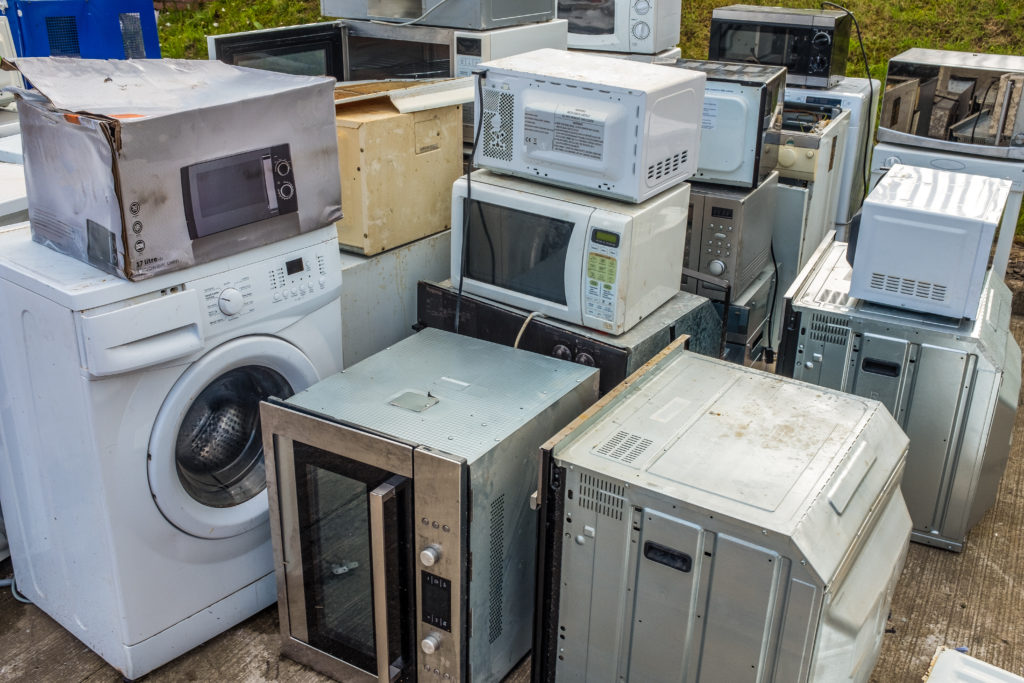
What to do with your brand-new smartphone that now has a cracked screen? How about your trustworthy three-year-old laptop that needs a storage upgrade or memory expansion? What about that high-tech front-loading washing machine that decided to stop spinning last week? Manufacturers are increasingly choosing the answer for us: toss it out and buy a new one. Tight grips on replacement parts, restrictive design, the use of “digital locks” and other legal protections have all contributed to the difficulty in repairing and maintaining the increasingly high-tech things that surround us.
It’s time for “right-to-repair” advocates in Canada to come together and put comprehensive solutions on the table. With many overlapping policy issues and a complex network of interests, Canadian repair advocates need to deliver a coherent message. Finding success will require effective lobbying at all levels of government for legislative changes that will allow both the right and ability to repair the things we own without contravening intellectual property and other laws.
The costs of our increasing inability to repair things go beyond pocketbook issues. This trend has major environmental impacts as well. Extraction of raw materials, use of rare-earth metals, lead soldering, shipping and packaging are just a few examples of the ecological toll imposed by the short lifespan of many modern devices and equipment. Electronics waste is now globally among the fastest growing type of waste, increasing at a rate of three to four per cent each year. And as the global microchip shortage reveals, ostensibly every industry is now the electronics industry. Widespread computerization of things makes them all the more likely to end up in a landfill prematurely.
It’s not just consumer electronics that are under the microscope, either. Industrial equipment, medical devices, electric cars and even the ice cream machines in McDonald’s restaurants are becoming notoriously difficult for independent technicians to repair and maintain. This increases businesses’ operational costs, curtails market competition and discourages follow-on innovation. It can even deny crucial public services like hospitals the ability to ensure that faulty equipment (including ventilators) are put back online as quickly as possible. This can have huge implications for the efficient and timely delivery of health care in the context of the COVID-19 pandemic.
Canadians are getting tired of the situation. A poll conducted in 2019 found that 75 per cent of us strongly support right-to-repair policy reforms that would make things easier to maintain, fix and upgrade. And politicians of every stripe have overwhelmingly supported these reforms. In the United States, the Federal Trade Commission recently endorsed the right-to-repair in a recent report, finding that there is “scant evidence to support manufacturers’ justifications for repair restrictions.” Inspired by these developments and Europe’s “Circular Economy Action Plan,” Canada’s right-to-repair movement has been taking place at both the grassroots level and as a policy push within all three levels of government.
In Ottawa, Liberal MP Bryan May has introduced a private members bill – Right to Repair Private Member’s Bill (C-272) – targeting the digital lock provisions in Canada’s Copyright Act. Digital locks can be many different things, but usually come in the form of technical restrictions that lock out users from accessing device firmware. This access is often needed to carry out diagnostics and repair. In some cases, digital locks can completely disable or “brick” a device where the repair or replacement part is not condoned by the manufacturer.
The Copyright Act imposes significant penalties for circumventing digital locks without authorization from the manufacturer, and May’s bill looks to carve out an exception for the purposes of “diagnosing, maintaining, or repairing” products with embedded computer programs. The bill has been sent to committee after passing second reading in mid-April.
Meanwhile at the provincial level, Quebec has shown progress toward amending its Consumer Protection Act to include right-to-repair provisions. Independent NMA Guy Ouellette introduced Bill 197 in April of 2019. It requires manufacturers to ensure access to parts, tools and repair services at a reasonable price to consumers. Bill 197 also requires manufacturers to uphold warranties on products repaired by independent technicians. Quebec’s National Assembly has voted overwhelmingly in favour of the bill and it was recently sent to committee for discussion.

At the grassroots level in British Columbia, the Share Reuse Repair Initiative has taken a hands-on approach to the right to repair. It has hosted numerous repair cafés, where people can bring along their broken or non-working things to an open workshop and learn how to fix them. Volunteers with this initiative have since prepared a motion before the Union of British Columbia Municipalities that calls upon the provincial legislature to enact right-to-repair legislation. The motion has since passed unanimously in the City of Victoria and is awaiting vote in other municipalities throughout the province.
Each of these efforts shows that the right-to-repair movement is gaining traction in Canada. Each adopts a distinct approach to achieving reforms from a policy standpoint with immense promise. Yet, advocates in Canada should be wary of the powerful influence of lobbying against these reforms. Lessons can be learned from Ontario, where Opposition MPP Michael Coteau’s Right to Repair bill was quashed in February of 2019 under the strong influence of Apple, Panasonic and other technology manufacturers.
Repair is a big business, after all. Over the years, these manufacturers have made monopolizing servicing and repair a crucial business strategy. They have every interest in keeping repair on a tight leash. This explains why technology companies have taken great strides toward slowing or killing right-to-repair reforms in the United States. There is little reason to think they would have a change of tune when it comes to Canada.
The arguments against right to repair from these companies are often targeted at the need to protect their intellectual property or ensure user safety and security. These arguments sound credible at first, but they are distractions. Reforms are about ensuring that businesses and consumers have the choice of repairer. No independent repair technician is in the position to begin constructing new equipment with third-party components. It’s about ensuring access to replacement parts and information to maintain existing devices and machinery.
The truth is that large technology companies would rather keep exclusive control over that choice and access so that they can turn around and make it cost prohibitive or refuse it altogether. Perhaps the next time a nearly new iPad spontaneously catches fire, or a farmer’s personal data is hacked through his combine’s central computer, we can think a bit harder about what safety and security really means – particularly when the knowledge of how these devices and machines work are held by so few people.
Assembling Canada’s right to repair is no small task, but achieving these reforms is not insurmountable. There is precedent for these types of policies in the automotive industry, where aftermarket parts and independent repair and servicing have been the status quo for nearly a century. Access to replacement parts and the ability to perform repairs when required in the automotive industry is the foundation for tens of thousands of jobs across Canada, and there is little reason to think that electronics and equipment with embedded computer systems would be any different.
From a policy perspective, the right to repair has more than one dimension. It is an issue for consumer protection law, competition law and intellectual property policy. It also calls for greater consumer awareness, knowledge and support. Each of these aspects of the right to repair requires efforts at both the policy and grassroots levels to assemble. It requires engaging government at all three levels in conjunction with industry groups and citizens groups. For this, repair advocates in Canada need to come together. Without a coherent and unified voice, these promising policy reform efforts risk becoming confusing to policy-makers and the public while being trampled upon by large technology firms’ deep-pocket lobbying efforts.
This is about more than utility and immediate benefits. Repair is also a learning exercise that generates knowledge leading to new discoveries, entrepreneurship, innovation and unforeseen uses for things. As the grassroots efforts in B.C. and elsewhere demonstrate, this is also about community building and helping others. Right-to-repair advocates in Canada must not lose sight of this. It is time that Canada’s right-to-repair movement puts all of the pieces together and speaks with a unified voice.
Anthony Rosborough is working toward building a national repair association.









